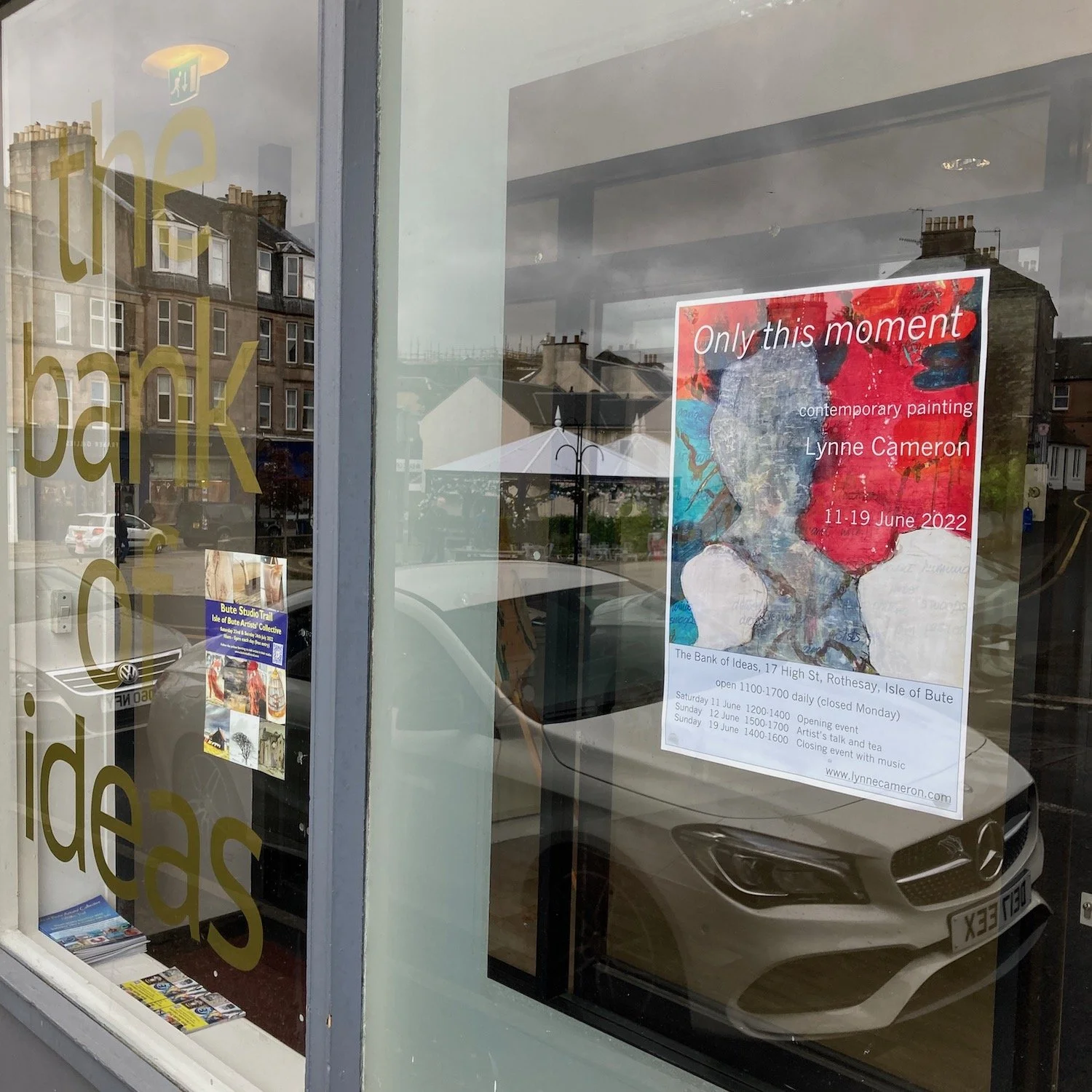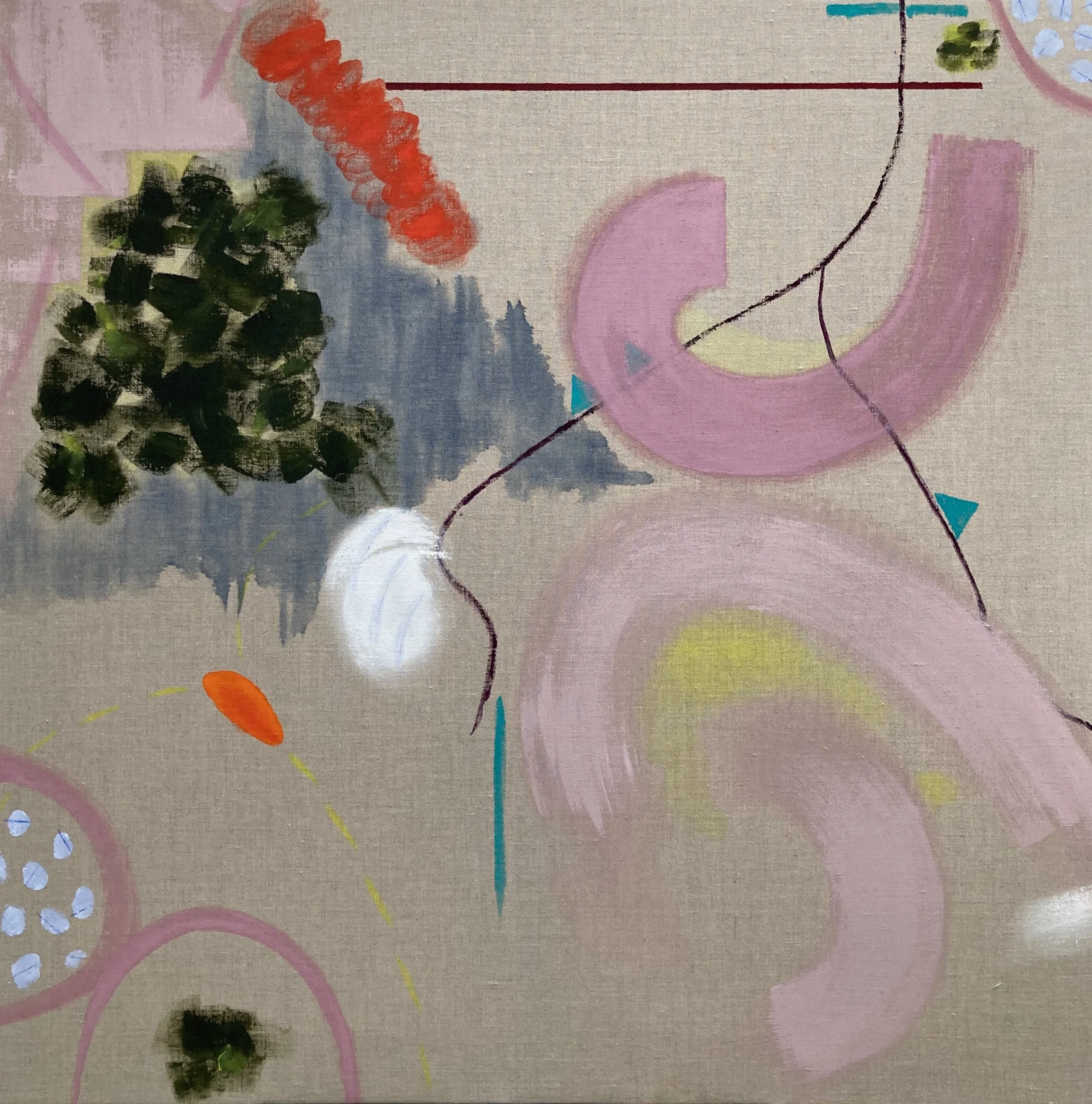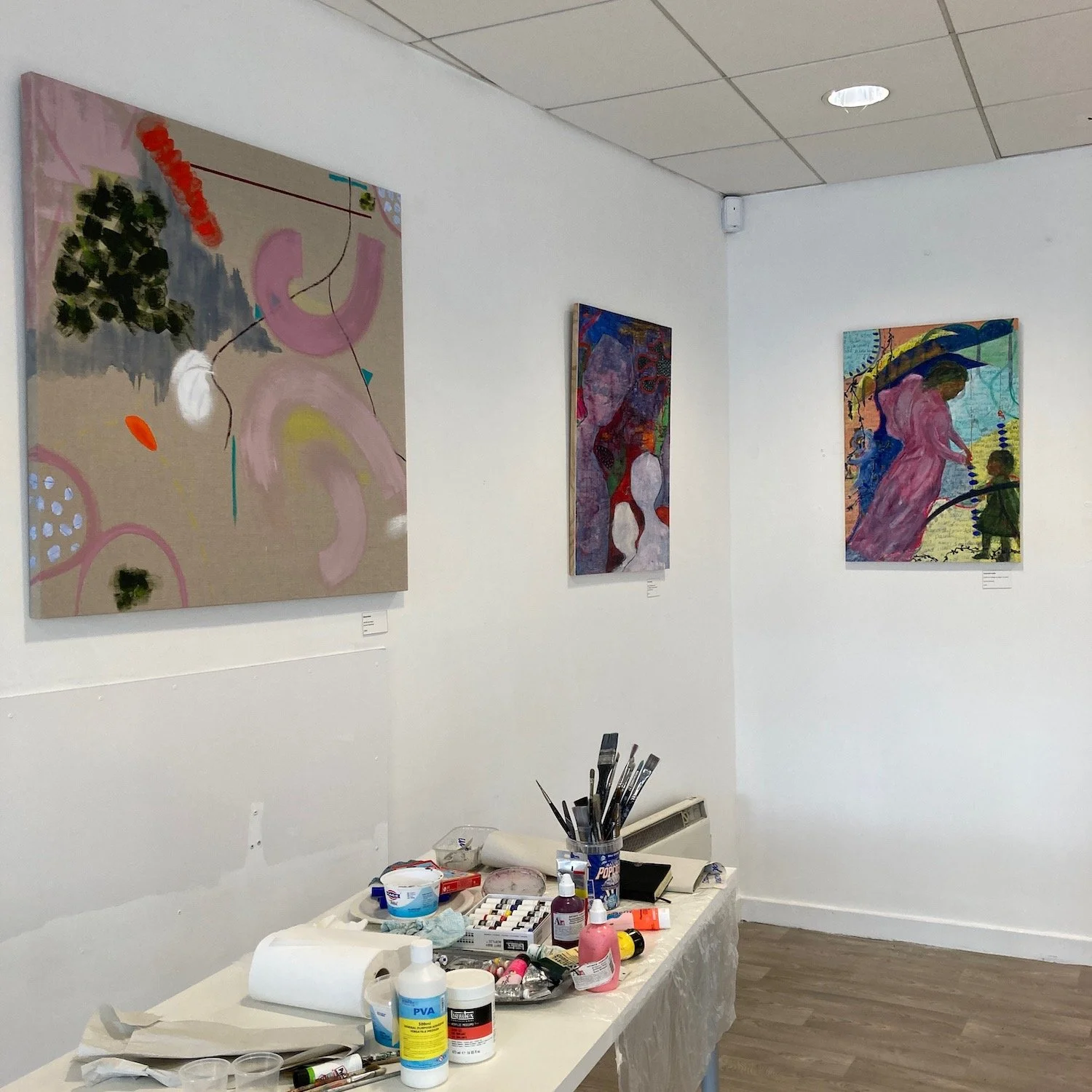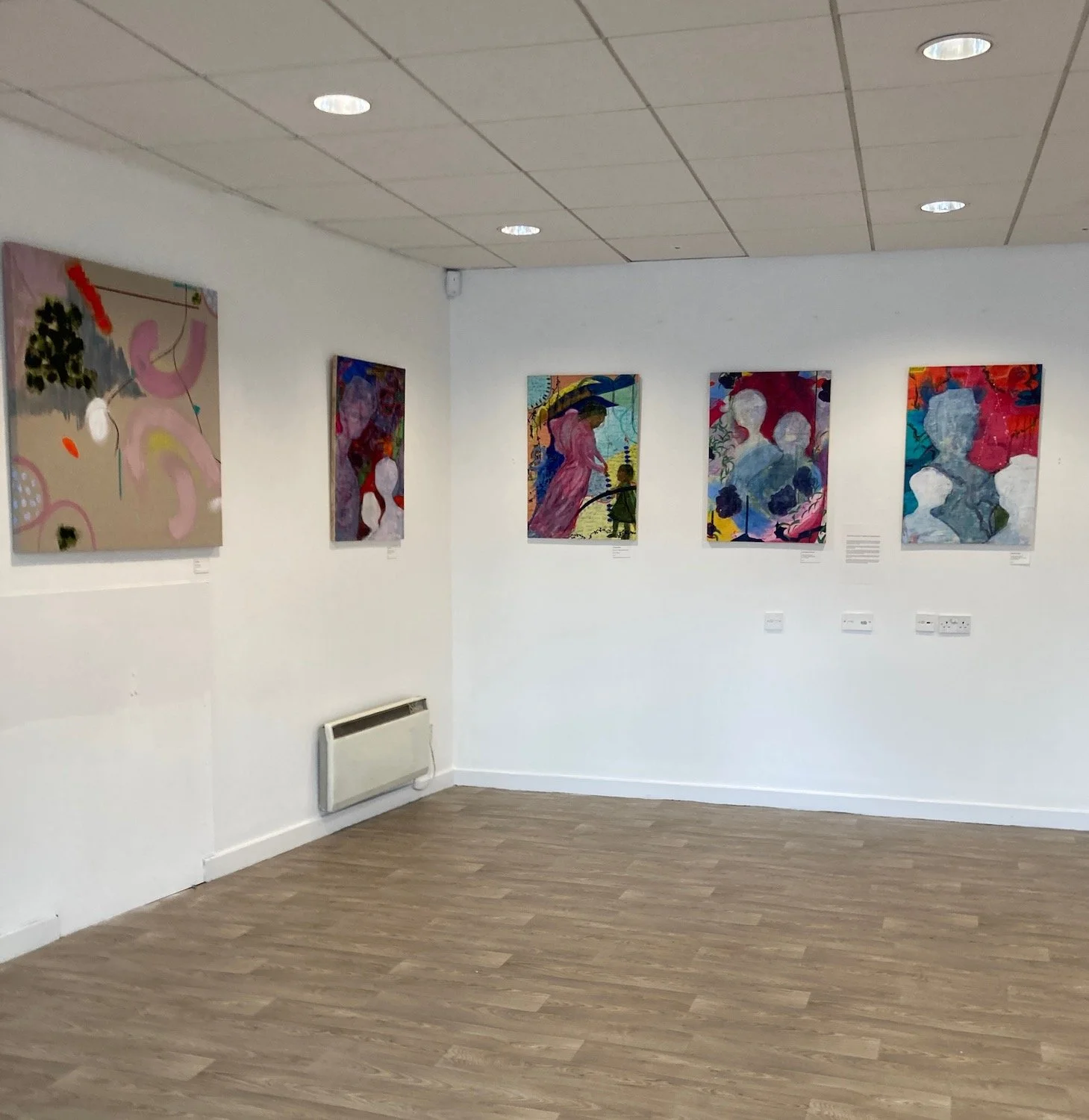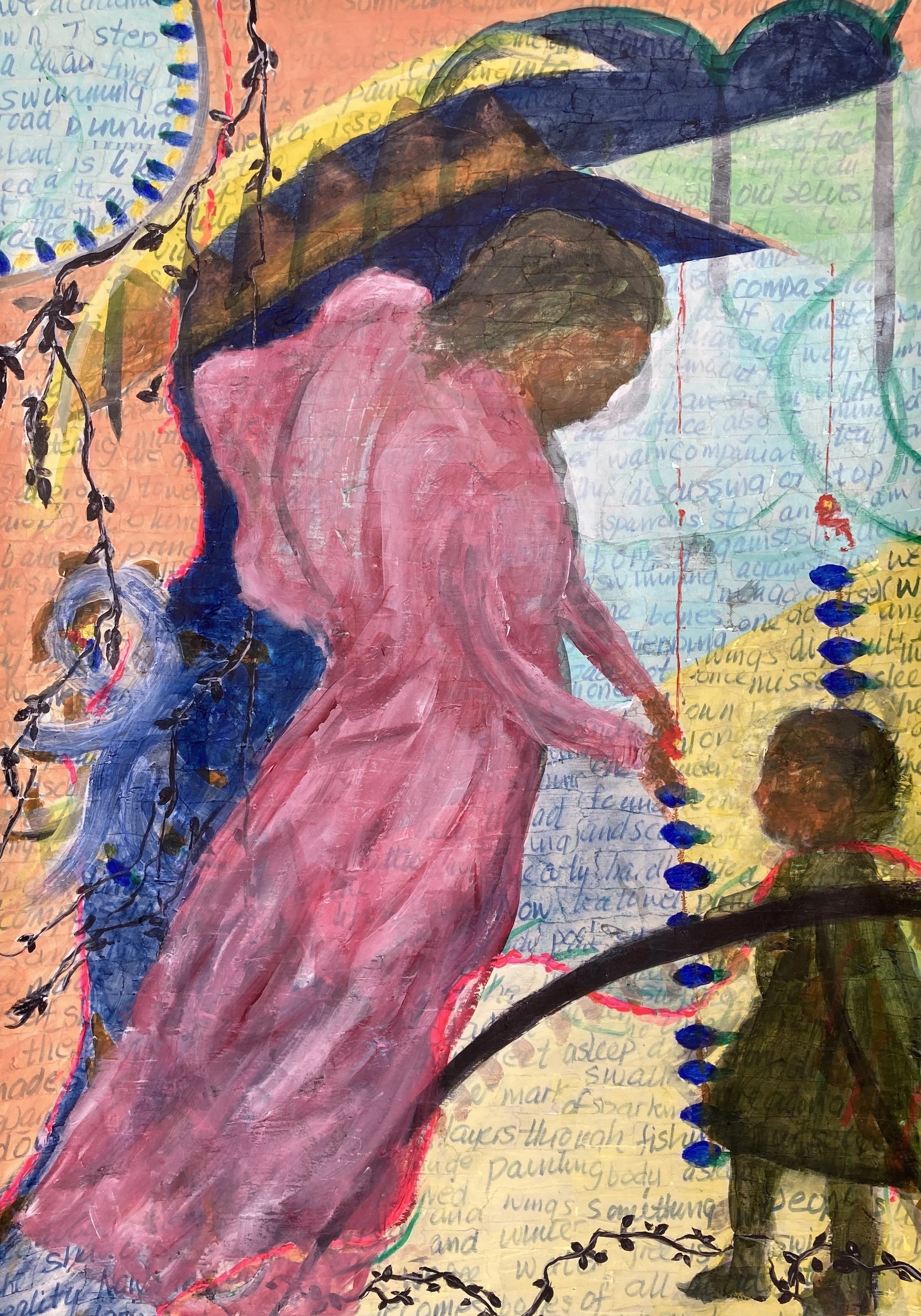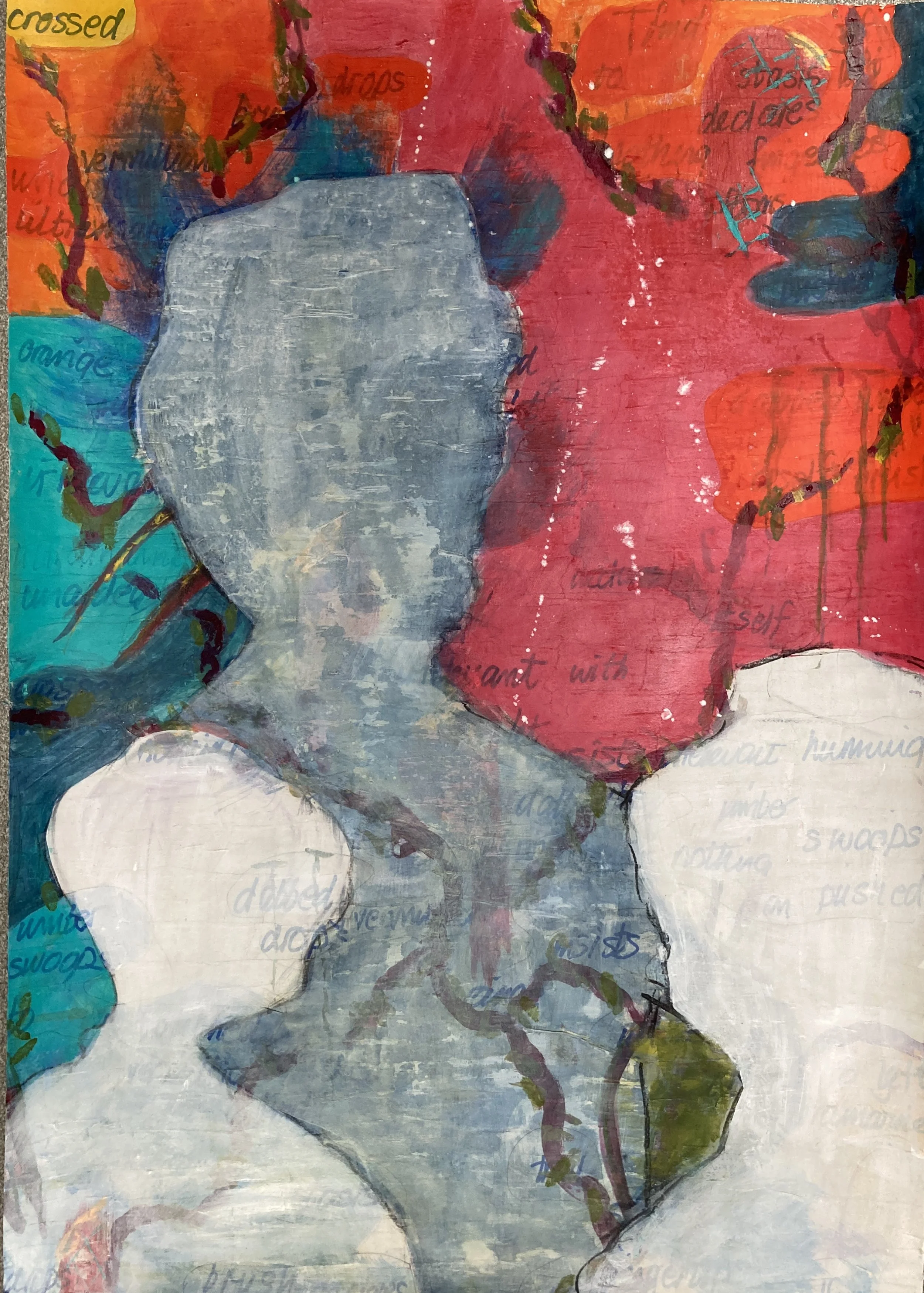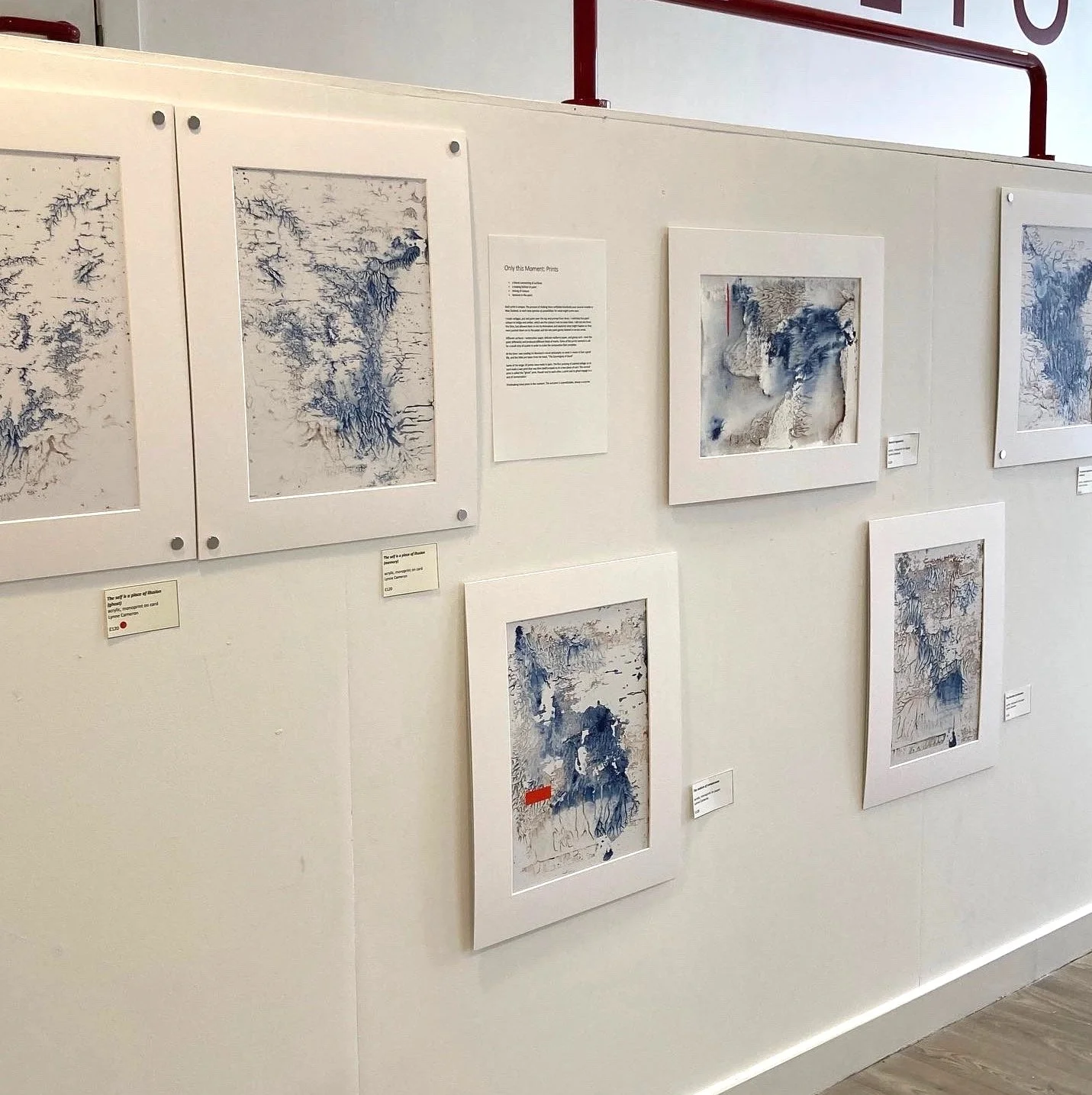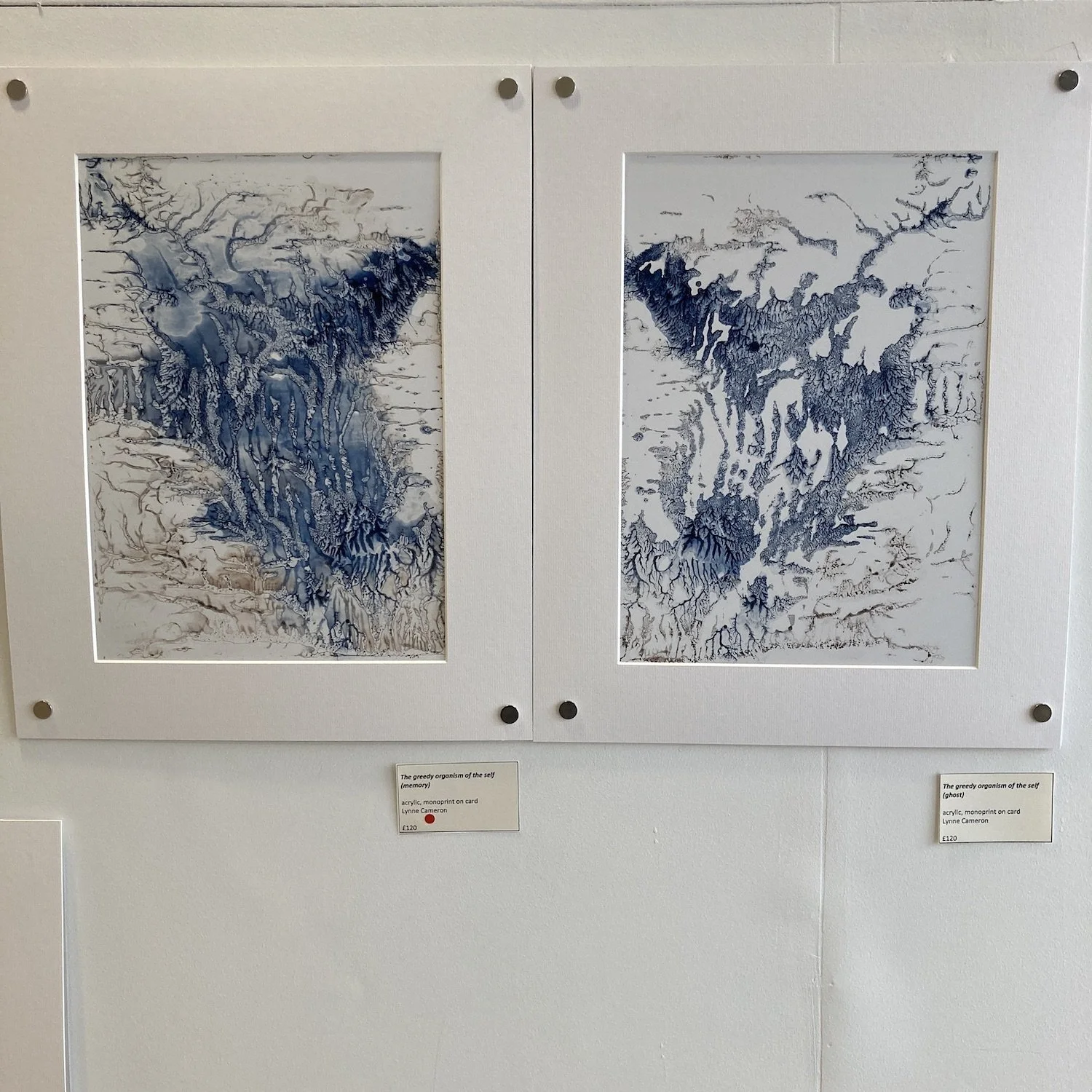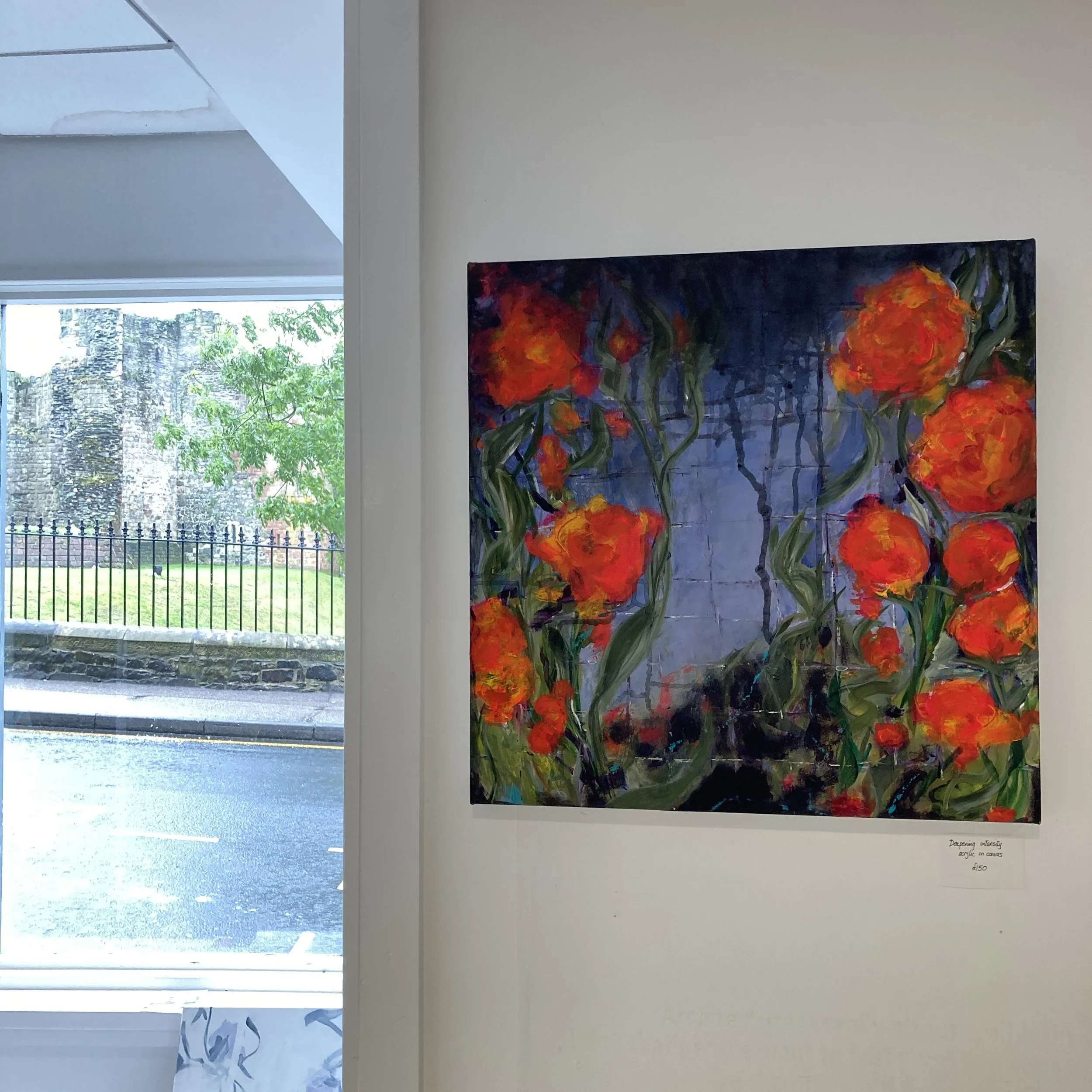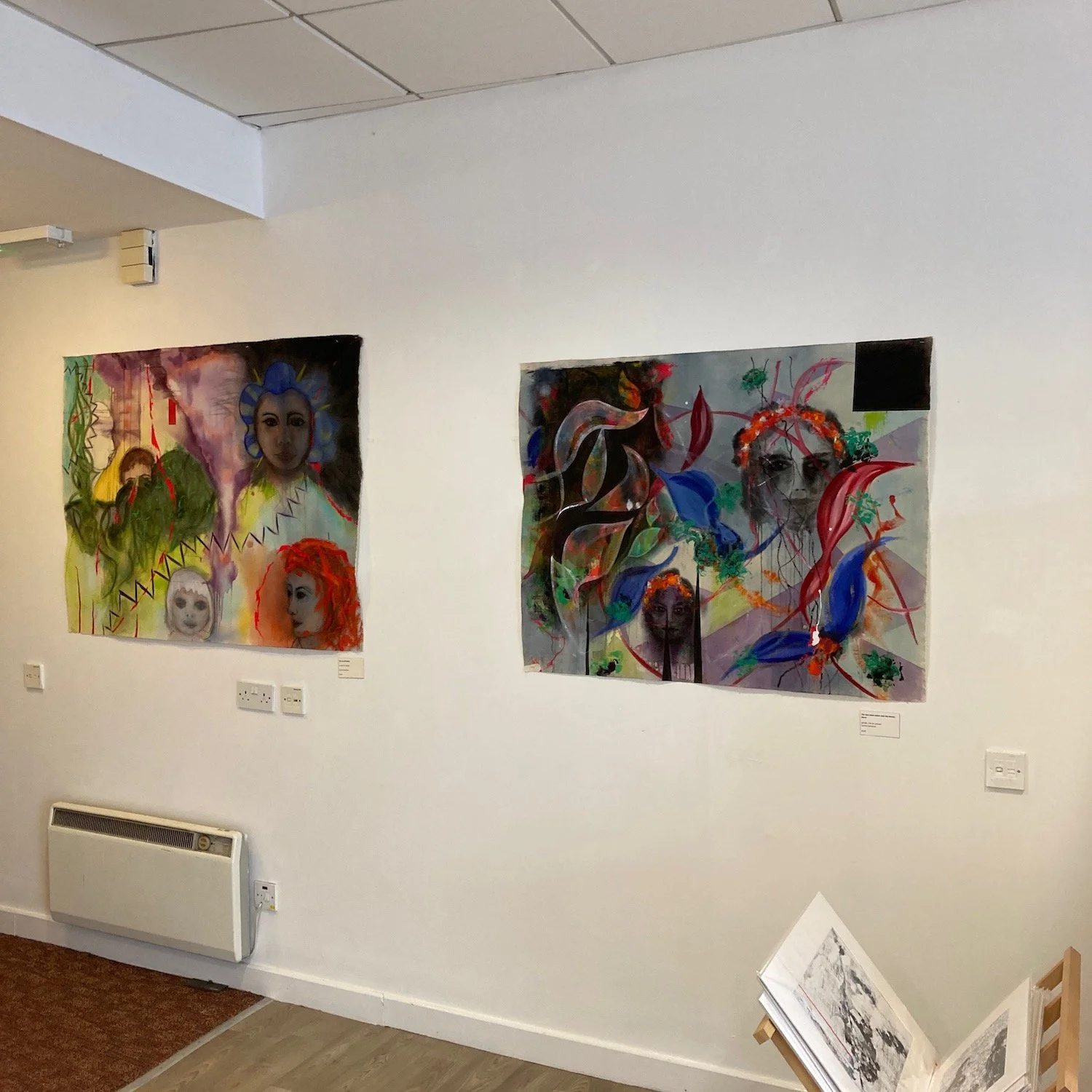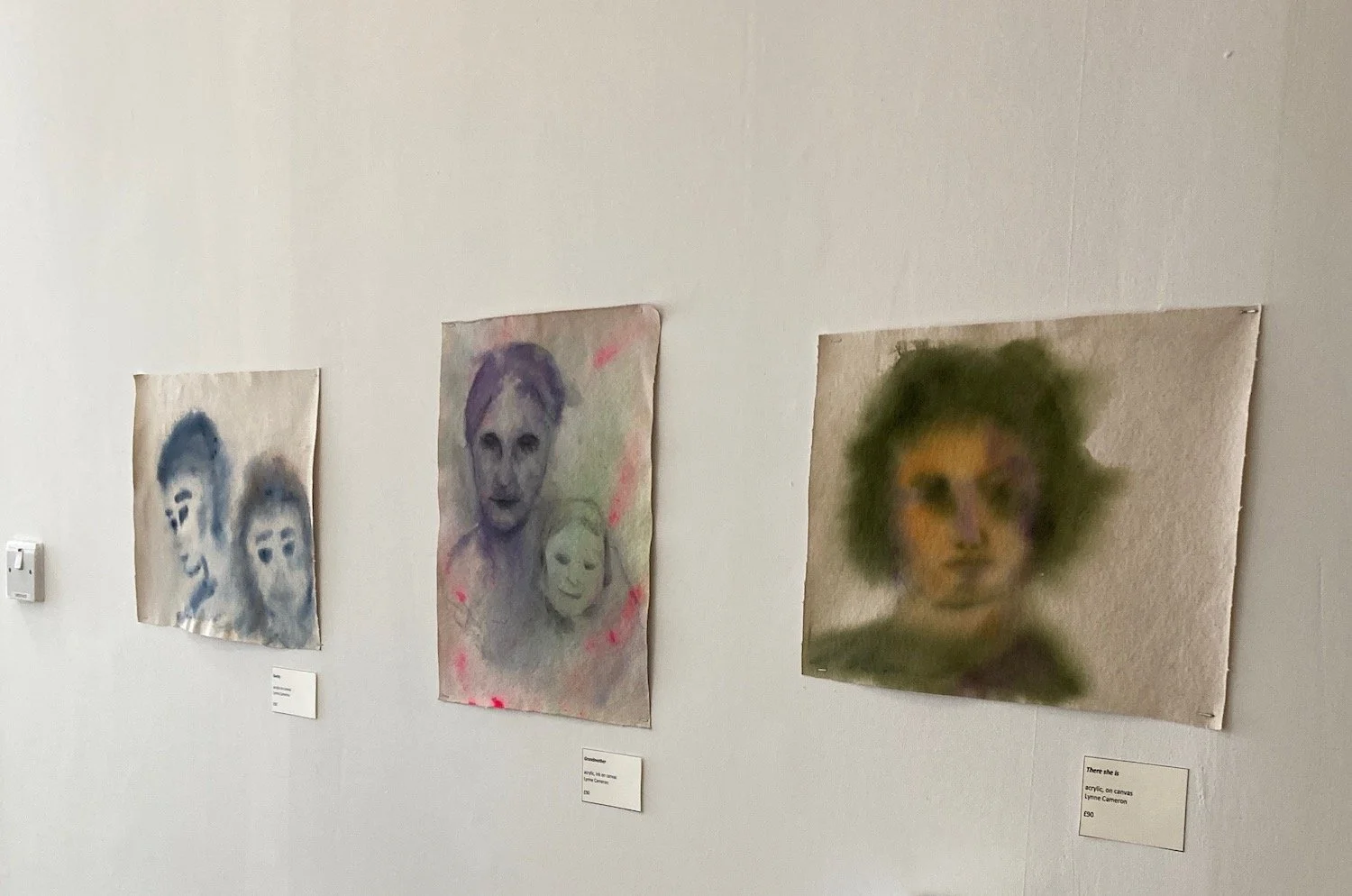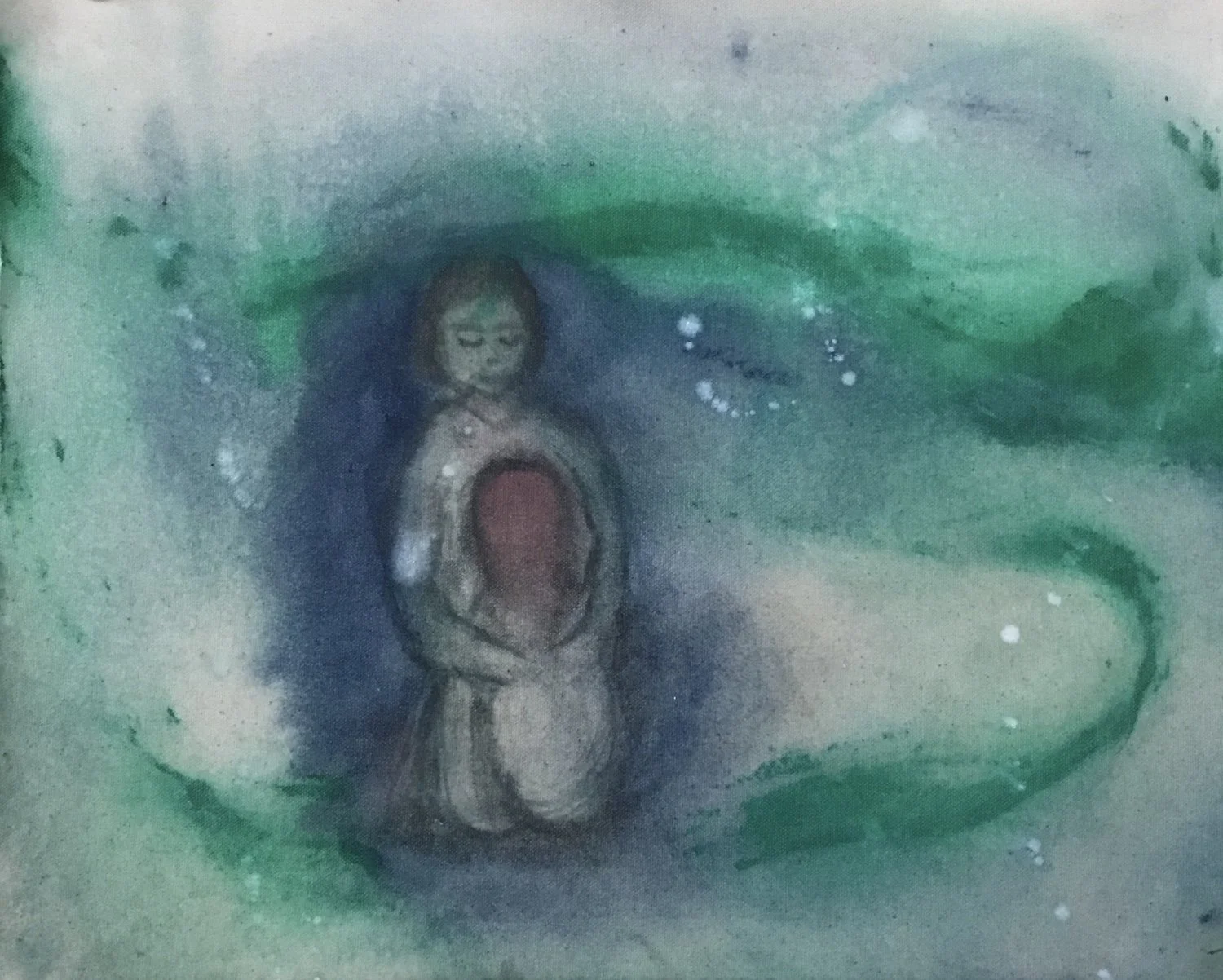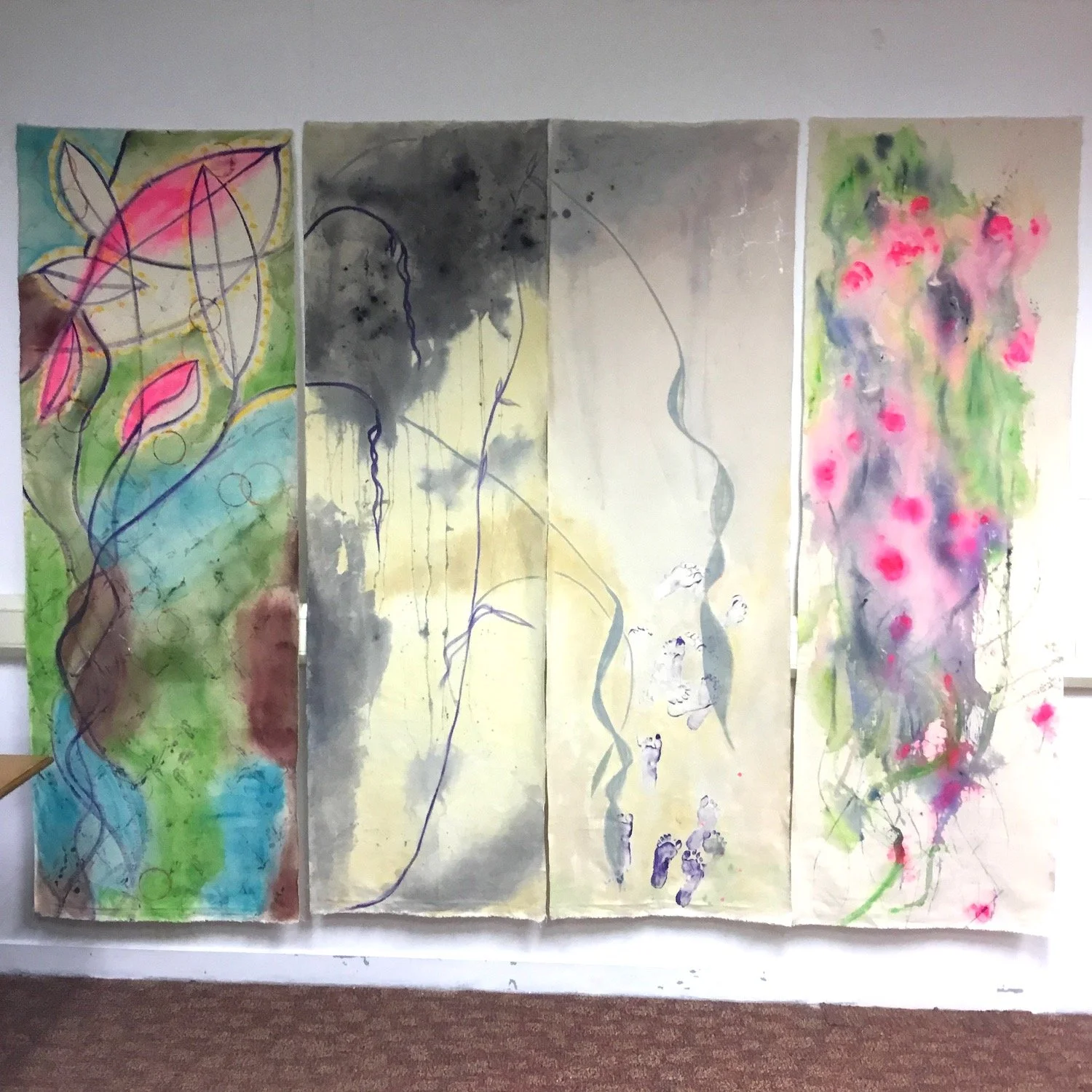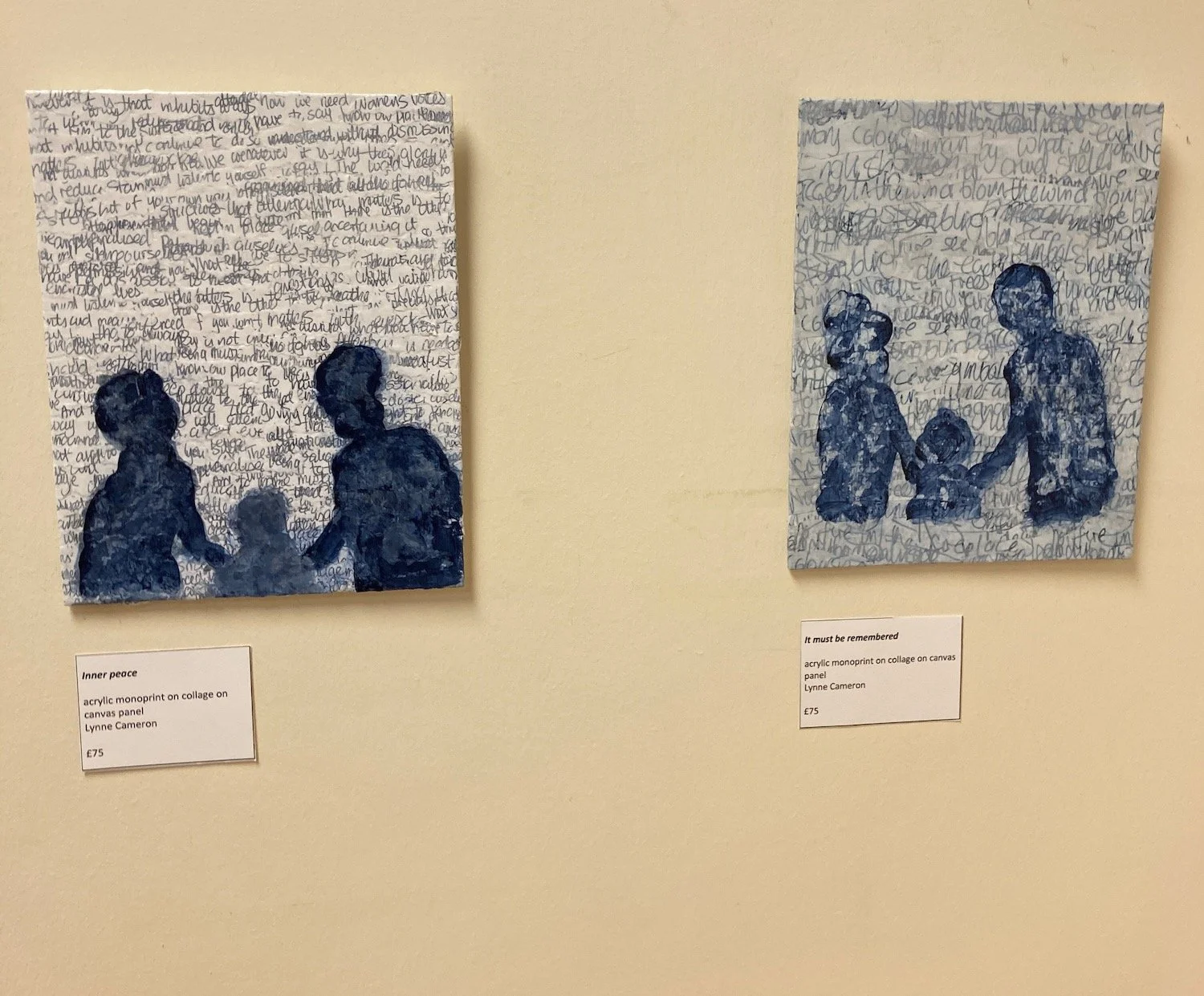Welcome to the online exhibition!
Just across from Rothesay Castle and open whatever the weather…
Only this moment: Artist statement
Lynne Cameron
This exhibition shows work made since 2020, during the coronavirus pandemic and our gradual exit from it. Times of such change and uncertainty highlight how we have Only this Moment. When covid struck, I was in New Zealand visiting family, and I had to stay there for 10 months until flights resumed back to the UK. Then in October 2020, there were two weeks of quarantine, walking my garden in Bute. After that, months of working in isolation, meeting only in a small family bubble. When we were allowed to travel, I was reluctant, and have only recently taken a flight again.
The constant through all this time has been my painting practice. The artworks in this exhibition reflect the evolution of this daily practice in whatever place became my studio – prints made on the floor of my apartment in Christchurch, paintings made at the kitchen table here in Bute. I have made abstract paintings for a long time and was surprised to find figures emerging out of the abstract forms. These paintings speak of solitude and connection, of other people missed and seen from a distance, as if in freeze frame.
I began drawing and painting around twenty years ago, after operations to remove cataracts shocked me into a new awareness of beauty and colour. I pursued my growing passion for art through a range of courses, including “Advanced Painting” at Morley College, London. In 2014 I left my university professorship to work as a professional artist. After two years as senior research fellow and artist-in-residence at Cinepoetics, Centre for Advanced Film Studies Berlin, I moved to the wild west coast of Bute in 2017.
I take support for my painting from the reflective sensibilities of women artists, including Joan Snyder and Anne Truitt; from the delicate scrutiny, commitment, and poetic writing of John Berger; and from the powerful use of colour by German and American abstract expressionists. Each place I live in provides energy for my paintings, in the form of resonant lines, shapes, or gestures.
See more of my work at my Open Studio, 23-24 July, as part of the Bute Studio Trail. Details at https://www.butestudiotrail.com/
Studio visits by appointment.
Website: https://lynnecameron.com
Let me show you round …
As you come in, you find two large canvases painted soon after I returned to the Isle of Bute from New Zealand, sad to leave, keen to get home, and worried about coronavirus.
A History of Leaving, acrylic on linen 100 x 100 cm
A young lad, no more than 10 or 11 years old, explained to me A History of Leaving was his favourite - he found so many things in it to look at. He is an artist himself. His parents and I listened, impressed by what he saw, what he noticed.
Qauarantine, acrylic on raw linen 100 x 100 cm
Quarantine was painted during the time I spent in isolation at home after flying back. It was so good to see my art books again and I picked out Patrick Heron’s Garden Paintings to fill my eyes. I walked around my own garden, two or three times a day for two weeks. Coming back inside, I would mix paint and make a brush stroke.
I wanted to continue the wall of colour around the exhibition space, so the next painting and the four around the corner are the most recent ones I’ve made. Figures. What a surprise for this abstract painter when figures started to emerge!
Poetry begins. acrylic, charcoal on collaged handwriting on paper, mounted on wooden panel, 59 x 84cm.
Separated reality, acrylic on collaged handwriting on paper, mounted on wooden panel, 59 x 84cm.
Only this moment: Figures in freeze frame
These paintings perhaps reflect absences imposed by the pandemic. The people seem to be in conversation, with each other and with the viewer. Some of them have a fond remembering of my recent experience of ‘grandmothering’, the close connection with small trusting bodies and the surge of love for new beings.
The paintings explore surface and surface texture – how the paint is received – and how words can be combined with paint. They use collaged words to create textured surfaces. Paint hides words and reveals them.
First there is poetry, and a poem handwritten on paper then ripped into strips and glued in random order on to the base of heavy watercolour paper. It makes a surface to be painted on, covered and kept visible. The textured surface is unpredictable, rough, with torn edges soaking up more paint, with random juxtapositions.
Pencil lines may circle around words, forming organic shapes. Sometimes the paint follows the pencil lines, filling in shapes or outlining. Other times it strikes out across the surface on its own journey.
At a certain point in the process, there is a pause and figures are welcomed on to the surface, using charcoal to encourage them to take shape. I don’t know in advance how many people will arrive or how they will relate to each other. It feels to me that the figures are acting in some kind of film that remains unmade and thus unknowable.
An occupation of the body, acrylic, charcoal on collaged handwriting on paper, mounted on wooden panel, 59 x 84cm.
Only this moment, acrylic, charcoal on collaged handwriting on paper, mounted on wooden panel, 59 x 84cm.
Sea clouds dissolve, acrylic on collaged handwriting on paper, mounted on wooden panel, 59 x 84cm.
The small wall seemed to suit the monoprints that I made in New Zealand during lockdown and brought back with me. The prints came out of a longer project where an artist friend in UK and I spoke regularly over zoom. We started from her suggestion, an article on how Jaspar Johns developed an exhibition out of a torn photograph. We each chose a starting point and followed our own processes and ideas, but it was so good to be ‘accompanied’ in the exploratoin - it kept my practice vital at this difficult time.
The greedy organism of the self, memory and ghost, acrylic on card, A3, mounted.
Only this Moment: Prints
· a literal connecting of surfaces
· a leaving behind of paint
· mixing of colours
· textures in the paint
Each print is unique. The process of making them unfolded intuitively over several months in New Zealand, as each step opened up possibilities for what might come next.
I made collages, put wet paint over the top and printed from them. I restricted the paint colours to indigo and umber, which are the colours I mix to make black. I did not mix them this time, but allowed them to mix by themselves and explored what might happen as they were pushed down on to the paper and the wet paint gently blotted in certain areas.
Different surfaces – watercolour paper, delicate mulberry paper, and glossy card – took the paint differently and produced different kinds of marks. Some of the prints seemed to ask for a small strip of scarlet in order to make the composition feel complete.
At the time I was reading Iris Murdoch’s moral philosophy on what it means to live a good life, and the titles are taken from her book, “The Sovereignty of Good”.
Some of the larger A3 prints were made in pairs. The first pressing of painted collage on to card made a wet print that was then itself pressed on to a new piece of card. This second print is called the “ghost” print. Placed next to each other, a print and its ghost engage in a sort of conversation.
Printmaking takes place in the moment. The outcome is unpredictable, always a surprise.
An area for discussion. acrylic on paper, A3, mounted, £120
An ideal endpoint. acrylic on mulberry paper, A4, mounted, £60
In the window, I’ve placed two abstract paintings, and peonies. On the left is Sit lightly with your desires, acrylic and pencil on paper, mounted on wooden panel, £375. On the right: Papillon, acrylic on canvas, 51 x 61 cm, £225.
Next to the door, a pre-pandemic painting. Part of this painting was made in a demo at my last exhibition in Rothesay back in 2019.
Deepening Intensity, acrylic on canvas, 60 x 60cm, £150
Leading into the small corridor to the back room are two large canvases, with faces…
Left: We are all hiding. Right: The too-soon-taken and the barely-there. acrylic on raw canvas, £525 each.
Down the corridor are five small paintings from the Stained Faces series, using very wet acrylic paint on raw canvas…
In the back room, I’ve taken the opportunity to hang the four painted panels made on the floor of my Christchurch apartment. I’ve enjoyed showing people the footsteps of my then 3 year old granddaughter on the third panel. She loved painting her feet purple and running across the canvas. Two years on, I remember it vividly, while she has no memory of it at all - that’s grandmothering, I suppose…
Lockdown panels, acrylic on raw canvas, each approx 70 x 210cm.
And finally… hiding in a corner are two more prints on collaged text
On the way out, you may spot another abstract painting, next to the Visitors’ Book…
and do we hug? acrylic on paper, 61 x 84cm, mounted on wood panel £375
Thank you for visiting!
visitors’ Book
You are invited to leave a comment


